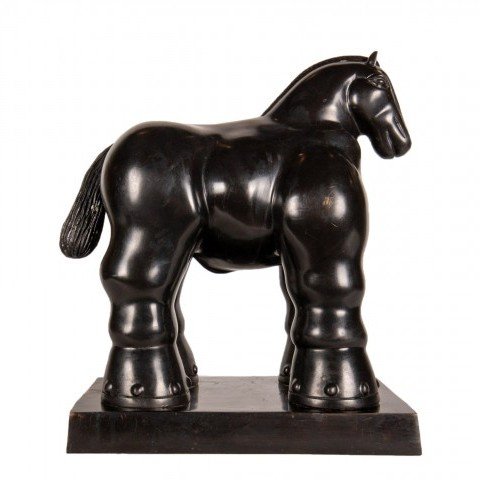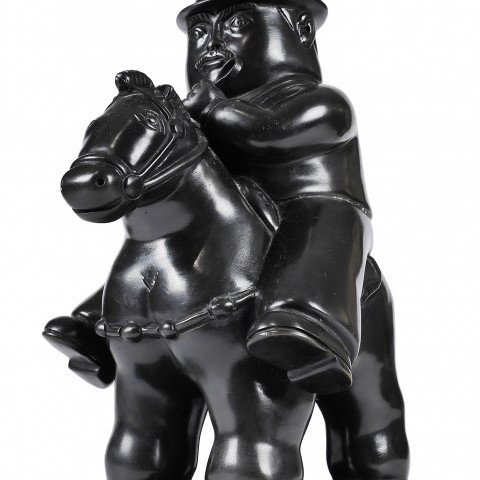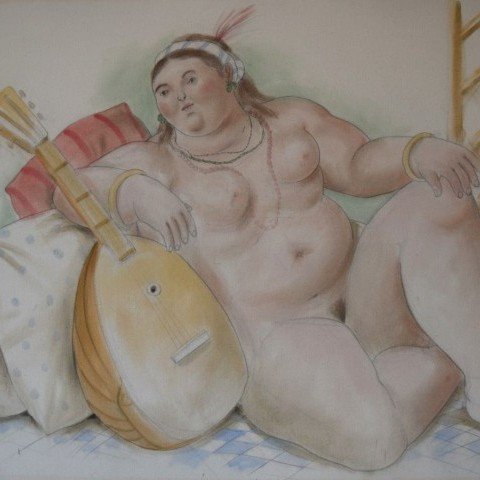Fernando Botero, the youngest of three brothers, was born in Medellin, the industrial and commercial center of Columbia; a small provincial city high in the Andes mountains. His father, who died when Fernando was four, was a salesman who traveled on horseback into the mountains to work. Botero had an uncle who sent him to a school for matadors.
Botero's first painting was a watercolor of a matador. As an adolescent he discovered "Esquire Magazine" and the Vargas girls and decided that he was going to be an artist, even though that meant that he would always be poor.
He was expelled from his Jesuit high school for his "irreligious" ideas after he wrote an article on Picasso and Cubist fragmentation. He was sent to a government school in Marinilla, a small nearby town, to finish his schooling.
After finishing high school in 1951, Botero moved to Bogota. He settled in Madrid for a year, spent a year in Paris, then two years in Florence. During his twenties, Botero continued to move frequently, returning to Columbia in 1955 when he married. He moved to Mexico City in 1956. He visited the United States for the first time a year later and in 1960 he moved to New York and has not lived full time in Latin America since. In 1972 Botero bought a house near Bogota, where he now spends several months each year. He is a celebrity there, a national hero, mobbed at the airport by fans wanting autographs.
Botero had three children from his first marriage and only one from his second marriage. Unfortunately this little boy died in 1974 in an automobile accident in which Botero himself was badly injured, especially his hands. Sophie Vari is a sculptor with whom he has lived for many years. They live in Pietrasante where both have studios in different parts of their house. Botero's turning to sculpture in the late 1970s surprised few who knew him well.
Botero is an avid collector of the work of the world's most foremost artists. His homes are all full of these works and they have all been a very strong influence on his painting and on his sculpture. There are many who consider his treatments of many of these themes to be satirical. His comment: "I create my subjects somehow visualizing them in my style. I start as a poet, put the colors down on canvas as a painter, but finish my work as a sculptor, taking delight in caressing the forms."
No, Botero is not fat.
Compiled and submitted August 2004 by Jean Ershler Schatz, artist and researcher from Laguna Woods, California.



